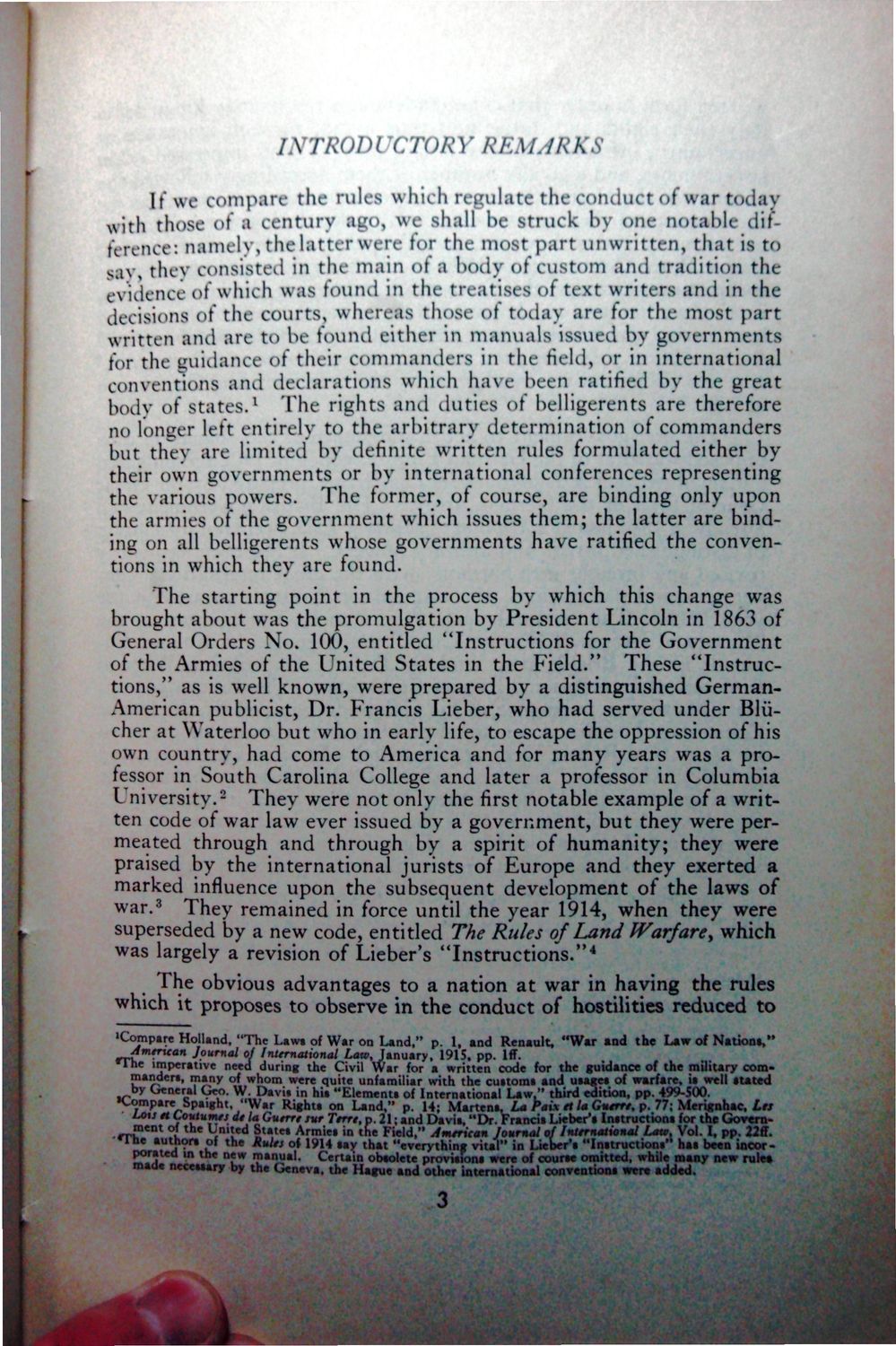| |
| |
Caption: War Publications - WWI Compilation 1923 - Article 14
This is a reduced-resolution page image for fast online browsing.

EXTRACTED TEXT FROM PAGE:
INTRODUCTORY RFMARKS tod irith those of a century ago, wc shall be struck by one notable difference: namely, the latter were for the most part unwritten, that is to suv, thev consisted in the main < t .1 body of custom and tradition the > evidence of which was found in the treatises of text writers and in the decisions of the courts, whereas those of today are for the most part written and arc to be found either in manuals issued by governments for the guidance of their commanders in the field, or in international conventions and declarations which have been ratified by the great 1 bodv of states. The rights and duties of belligerents are therefore no Ionizer left entirely to the arbitrary determination of commanders but thev are limited by definite written rules formulated either by their own governments or by international conferences representing the various powers. The former, of course, are binding only upon the armies of the government which issues them; the latter are binding on all belligerents whose governments have ratified the conventions in which they are found. The starting point in the process by which this change was brought about was the promulgation by President Lincoln in 1863 of General Orders No. 100, entitled "Instructions for the Government of the Armies of the United States in the Field/' These "Instructions," as is well known, were prepared by a distinguished GermanAmerican publicist, Dr. Francis Lieber, who had served under Bliicher at Waterloo but who in early life, to escape the oppression of his own country, had come to America and for many years was a professor in South Carolina College and later a professor in Columbia 2 University. They were not only the first notable example of a written code of war law ever issued by a government, but they were permeated through and through by a spirit of humanity; they were praised by the international jurists of Europe and they exerted a marked influence upon the subsequent development of the laws of 3 war. They remained in force until the year 1914, when they were superseded by a new code, entitled The Rules of Land Warfare^ which 4 was largely a revision of Lieber's "Instructions." The obvious advantages to a nation at war in having the rules which it proposes to observe in the conduct of hostilities reduced to Compirc Holland. "The Laws of War on Land." p. 1, and Renault, "War and the Law of Nations," American Journal of International Law, January, 1915, pp. Iff. •lne imperative need during the Civil War for a written code for the guidance of the military commanders, many of whom were quite unfamiliar with the customs and usages of warfare, it well stated by General Geo. W Davis in his "Elements of International Law " third edition, pp. 499-500. •Compare Spaight, "War Rights on Land," p. 14; Martens, La Paix et la Guerre, p. 77; Merignhac, Its Lou etCoutumes del*Guerresur Terre,p. 21;and Davis, "Dr. Francis Lieber's Instructions for theGorern. r r ? C n t ? i t h e H n i l e d S u , tc * A r m i c l i n t h * F«W." American Journal of International Lou. Vol. I, pp. 22ff. •The authors of the Rules of 1914 say that "everything vital" in Lieber's "Instructions'* has been inoorporated in the new manual. Certain obsolete provisions were of courtt omitted, while many ntw rule* made necessary by the Geneva, the Hague and other international conventions were added. , 3
| |